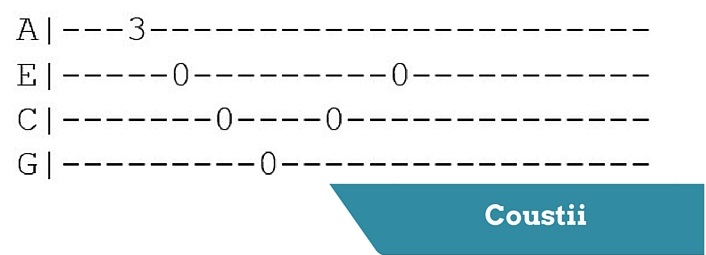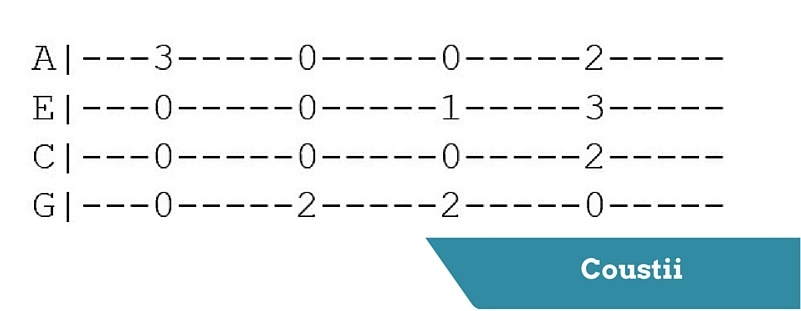https://www.musical-u.com/learn/developing-your-rhythmic-ears/
Rhythm is the gas in the music engine that makes your body move and your head nod. It makes you want to twerk, mosh, and all the other crazy things you do when you feel that backbeat nice and solid. As a musician, it’s crucial for you to have a firm understanding of the basics behind the concepts of rhythm. https://www.musical-u.com/learn/developing-your-rhythmic-ears/
What’s new in Musical U: Aug 2017
New musicality video:
Hi, this is Christopher Sutton, the Founder and Director of Musical U, and I’d love to share with you what’s new in Musical U this month. You can watch the video below or read on to learn more. https://www.musical-u.com/learn/whats-new-musical-u-august-2017/
We had three exciting new developments at Musical U this month. The first is a brand new module to help you connect with the beat in music. The second was our monthly masterclass this month with Jennifer Foxx talking about mindful practicing and how to kick those bad practice habits to the curve.
And, the third was new Resource Packs for guitar, bass, piano and singing on the topic of scale degree recognition and helping you to identify notes by ear and apply that directly on your instrument.
Let’s dive in!
WAIT! One more thing. We are launching a podcast in September. If you haven’t already heard about this, it’s going to be interviews and teaching, all on the topic of musicality.
I’m super excited about the new show, and we’ve been recording episodes in advance. We’ll be launching in just a couple of weeks now.
If you want the inside scoop and behind-the-scenes information, bonus content, all that good stuff – or if you just want to be notified as soon as it comes out, please head to musical-u.com/podcast-insiders and you can sign up for insider exclusives and all of the full information about this new show.
It’s going to be totally free, you can listen on your phone, tablet or on your computer, listen at your convenience and it’s going to be a fantastic way to dive deep into the world of musicality and how to develop your own skills to feel more like a natural musician.
Thanks for joining me for this look inside what’s new inside Musical U this month, and I hope to see you inside soon.
https://www.musical-u.com/learn/whats-new-musical-u-august-2017/
===============================================
Learn more about Musical U!
Website:
https://www.musical-u.com/
Tone Deaf Test:
http://tonedeaftest.com/
Musicality Checklist:
https://www.musical-u.com/mcl-musicality-checklist
Facebook:
https://www.facebook.com/MusicalU
Twitter:
Tweets by MusicalU
YouTube:
https://www.youtube.com/c/MusicalU
Subscribe for more videos from Musical U!
What’s New in Musical U: August 2017
Hi, this is Christopher Sutton, the Founder and Director of Musical U, and I’d love to share with you what’s new in Musical U this month.
You can watch the video below or read on to learn more.
We had three exciting new developments at Musical U this month. The first is a brand new module to help you connect with the beat in music. The second was our monthly masterclass this month with Jennifer Foxx talking about mindful practicing and how to kick those bad practice habits to the curve.
And, the third was new Resource Packs for guitar, bass, piano and singing on the topic of scale degree recognition and helping you to identify notes by ear and apply that directly on your instrument.
Let’s dive in!
New Rhythm Module: Connect with the Beat
We already have several rhythm modules at Musical U, including ones to help you learn the basics of rhythm, learn how to use speaking methods to get rhythms right in music, practicing, getting rhythms correct on your instrument or when clapping and to read rhythmic notation, as well as applying it to real music.
So why a new rhythm module? Well, what we found was that some members were coming in and although the concepts were clear from what our What is Rhythm and Tempo and the Beat modules, they then found there was a step missing when they went onto our Rhythm Practice module. In particular, they had difficulty finding the beat reliably in music.
Everything we do with rhythm depends on having a sense of the beat or the pulse of music, and so we’ve created a brand new module called Connect with the Beat. This new module helps you to connect with that beat in music to relate it to different instruments and to do exercises to help you connect with the beat in real music.
For example, there’s a walkthrough for Eye of the Tiger, a song I’m sure you know and then I think we go onto Taylor Swift. This whole module is about making sure when you hear a song, you can tune into where the beat is, clap along and then use that as a foundation for all of your rhythm skills.
We’re really excited to add this new module to the rhythm section of Musical U because it’s going to fill in that gap and help our members who are a bit more unsure about rhythm to get a rock solid sense of the beat before they move onto the more advanced material.
New Masterclass: Mindful Practicing
Every month at Musical U, we run a live masterclass, and this month we were delighted to have Jennifer Foxx from musiceducatorresources.com come and present on the topic of mindful practicing.
Jennifer is a real expert on helping students to get more out of their practice time and whether you’re a 13-year-old learning piano for the first time or a 30-year-old hobbyist guitar player, whatever stage you’re at with music, making the most out of our practice time is one of the most important things if we want to really reach our goals. I was so happy to have Jennifer with us to present both the problems and the solutions. Let’s have a quick peek.
Clock watchers. Clock watchers pretend to practice with the wrong reason and that’s basically to pass the required time. I know this happens a lot with younger students and that’s why I tell my parents that when they ask how long I want students to practice, I typically tell them, “You know what? I would rather them set practice goals because practice goals are going to be more efficient than watching the clock”. You can waste a lot of time say in 30 minutes of practice and get absolutely nothing done if you’re not focused.
Musical U members now have access to the full recording of this masterclass, as well as the helpful handout Jennifer prepared with all of the resources and links mentioned.
Resource Packs: Scale Degree Recognition
The third big addition this month with new Resource Packs for all of our Instrument Packs in Musical U. This month the topic was scale degree recognition. We already have a training module on scale degree recognition to help you to spot different notes from the scale by ear. Inside Musical U, we use the solfa system which calls those notes do, re, mi and so on but it’s exactly the same if you want to call them 1, 2, 3 or Bob, Jeff and Freddy. It’s just about giving an identity to each note of the scale.
That module works great for helping people develop the core skill of recognizing the notes of the scale. But, this month we had our Resident Pros prepare tutorials to help you apply that directly on your instrument.
Let’s take a quick peek at the tutorial video Clare Wheeler put together for our singers.
This week’s subject is learning scale degrees which is a great topic to continue on from the audiation and pentatonic videos that I’ve already done. It uses a lot of the same ideas. Essentially, we’re just taking one step further. This is great for getting your starting note if you sing in a choir or you’re a soloist. There’s no magic to it. It’s not this mystical thing that some people can just do. It’s all about knowing your scale degrees.
It’s really imperative for sight-reading. I think that in your module for sight-reading you learned about key signatures and stuff and you can learn all the theory you want but it’s going to be no good to you if you can’t find the note that you’re looking for.
And of course, my favorite thing is always how to use these things in improvisation.
As always that tutorial video is accompanied by a Quick Reference guide with all the key information and exercises taught, and some practice MP3s to help you really drill these exercises and practice them until they’re second nature.
So those were the three big additions to Musical U this month:
- Our new rhythm module to help you connect with the beat
- Our monthly masterclass, the recording of that masterclass, which was on the topic of “mindful practicing”.
- Our new Resource Packs for singing, piano, bass and guitar on the topic of Scale Degree Recognition.
WAIT! One more thing. We are launching a podcast in September. If you haven’t already heard about this, it’s going to be interviews and teaching, all on the topic of musicality.
I’m super excited about the new show, and we’ve been recording episodes in advance. We’ll be launching in just a couple of weeks now.
If you want the inside scoop and behind-the-scenes information, bonus content, all that good stuff – or if you just want to be notified as soon as it comes out, please head to musical-u.com/podcast-insiders and you can sign up for insider exclusives and all of the full information about this new show.
It’s going to be totally free, you can listen on your phone, tablet or on your computer, listen at your convenience and it’s going to be a fantastic way to dive deep into the world of musicality and how to develop your own skills to feel more like a natural musician.
Thanks for joining me for this look inside what’s new inside Musical U this month, and I hope to see you inside soon.
The post What’s New in Musical U: August 2017 appeared first on Musical U.
Syncopation is your secret portal to the world of intrica…
https://www.musical-u.com/learn/rhythm-training-101-study-syncopation/
Syncopation is your secret portal to the world of intricate, complex rhythms that immediately add a spark of interest to the music they’re underlying. Since its inception, musicians from nearly every genre have dipped their toes into the syncopation pool, recognizing that great things happen when you play around with the beat of a song. https://www.musical-u.com/learn/rhythm-training-101-study-syncopation/
Why would an accomplished musician take up singing when t…
https://www.musical-u.com/learn/isnt-it-time-you-learned-to-sing/
Why would an accomplished musician take up singing when they were already succeeding as an instrumentalist? What makes singing so important for musicians and so vital for good musicianship? And why would you take lessons rather than just trying to teach yourself to sing?
https://www.musical-u.com/learn/isnt-it-time-you-learned-to-sing/
As you’ve probably noticed, we have focused on the issue …
https://www.musical-u.com/learn/a-new-test-for-tone-deafness/
As you’ve probably noticed, we have focused on the issue of tone deafness. Why? Because we believe far too many people miss out on the joy of music-making because they falsely believe themselves to be tone deaf and incapable of becoming a musician. https://www.musical-u.com/learn/a-new-test-for-tone-deafness/
You’ve heard it before: “practice makes perfect!” So why …
https://www.musical-u.com/learn/deliberate-practice-for-musicians/
You’ve heard it before: “practice makes perfect!” So why do some weeks, or perhaps even months, leave you feeling like you’ve only made a tiny bit of hard-earned progress for all of those hours of work? https://www.musical-u.com/learn/deliberate-practice-for-musicians/
Have you been looking for a magical tool to transfer the …
https://www.musical-u.com/learn/discovering-pentatonic-solfa-part-1-exercises/
Have you been looking for a magical tool to transfer the music you hear to the music you play on your instrument?https://www.musical-u.com/learn/discovering-pentatonic-solfa-part-1-exercises/
You Bought a Ukulele… Now What?
Who doesn’t love the ukulele? If you’ve ever brought your instrument to a party, you and your uke were probably the center of attention.
If you’re brand new to learning ukulele, don’t worry, it’s not as difficult as you think! If you want to learn more about playing this fun little instrument, we’ve got everything you need to kick your playing into high gear!
Getting to Know Your New Instrument
You may notice that the ukulele is similar to a guitar, but it’s smaller and has its own distinct sound. The ukulele is composed of three sections: the head, the neck, and the body. The head of the ukulele features only tuning knobs, the neck features frets, fret markers, and a fretboard, and the body features the sound hole, bridge, and saddle. A fret is the strip of metal that goes across your ukulele.
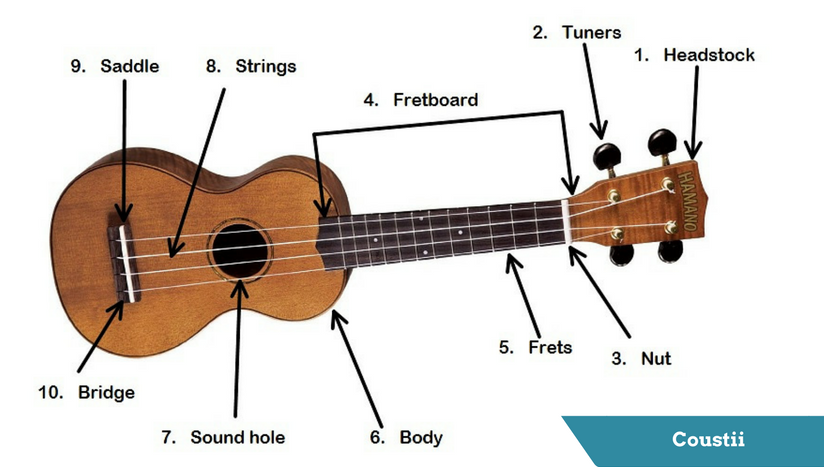
Playing different chords on various frets will allow you to create different sounds. The fretboard is the entire vertical piece on your guitar where the strings are extended and it also features the fret markers, which are small colored circles that help you to remember which fret your fingers are on. Lastly, the bridge and the saddle are where your strings are attached on the bottom of your ukulele.
Getting in Tune
Once you are familiar with the different parts of your ukulele, you need to learn how to tune it! We know that tuning can be a pain and seem like a waste of time, but you’ll quickly realize that if you don’t tune your ukulele, your music will be off-key! Tuning can be achieved with the use of a tuning app on a phone or an electric tuner, but it’s even better if you learn how to tune your ukulele by ear as well.
The first thing to know about tuning is that when you tighten the strings using the tuning knobs, the note will go higher in pitch, and when you loosen them, the note will go lower in pitch. If you’re new to tuning, ask someone else to help you, and remember to be careful when tightening the strings. If you tighten your strings too much you risk ruining them!
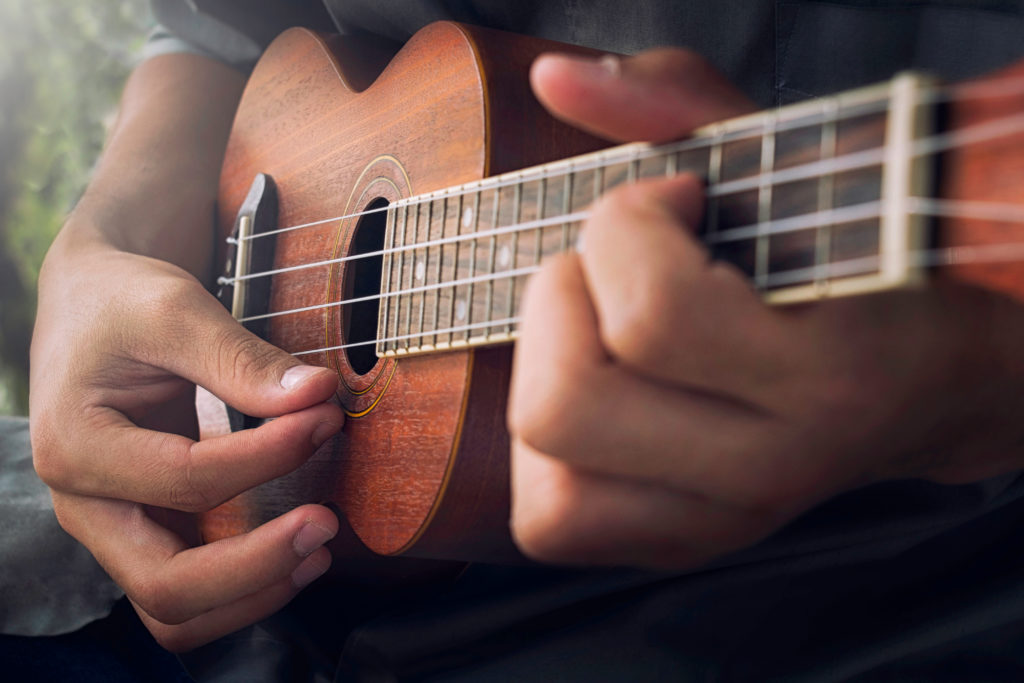 There are several different tunings that you can use. The most common method is G-C-E-A tuning. If you are tuning your ukulele strings to G-C-E-A, you can use the re-entrant or the linear method. Many people choose to tune their ukulele using the linear method, which allows you to open the note range of your uke!
There are several different tunings that you can use. The most common method is G-C-E-A tuning. If you are tuning your ukulele strings to G-C-E-A, you can use the re-entrant or the linear method. Many people choose to tune their ukulele using the linear method, which allows you to open the note range of your uke!
Other tuning methods include slack-key tuning, English tuning, and Canadian tuning. Feel free to research each method and see what works for you. If you have an ear for music, you may find it easy to tune by ear and start with the G chord, re-adjusting each string as you find the correct note.
Holding the Ukulele
Typically, ukulele players strum or pluck strings with their dominant hand and hold it with their non-dominant hand. When you are holding your uke, hold it against your chest and place the body of your uke in the crook of your elbow. You can also make use of a ukulele strap, or rest it in your lap if you are sitting. Don’t forget also to keep your back straight to avoid back and shoulder pain later!
Ukulele Tabs, Chords, and More!
Once you know how to tune your ukulele, or at least have downloaded a phone app, you are ready to learn how to read ukulele chords and tabs.
Chords
A quick refresher: chords are a cluster of notes played together, simultaneously. Ukulele chord diagrams look a little something like this:
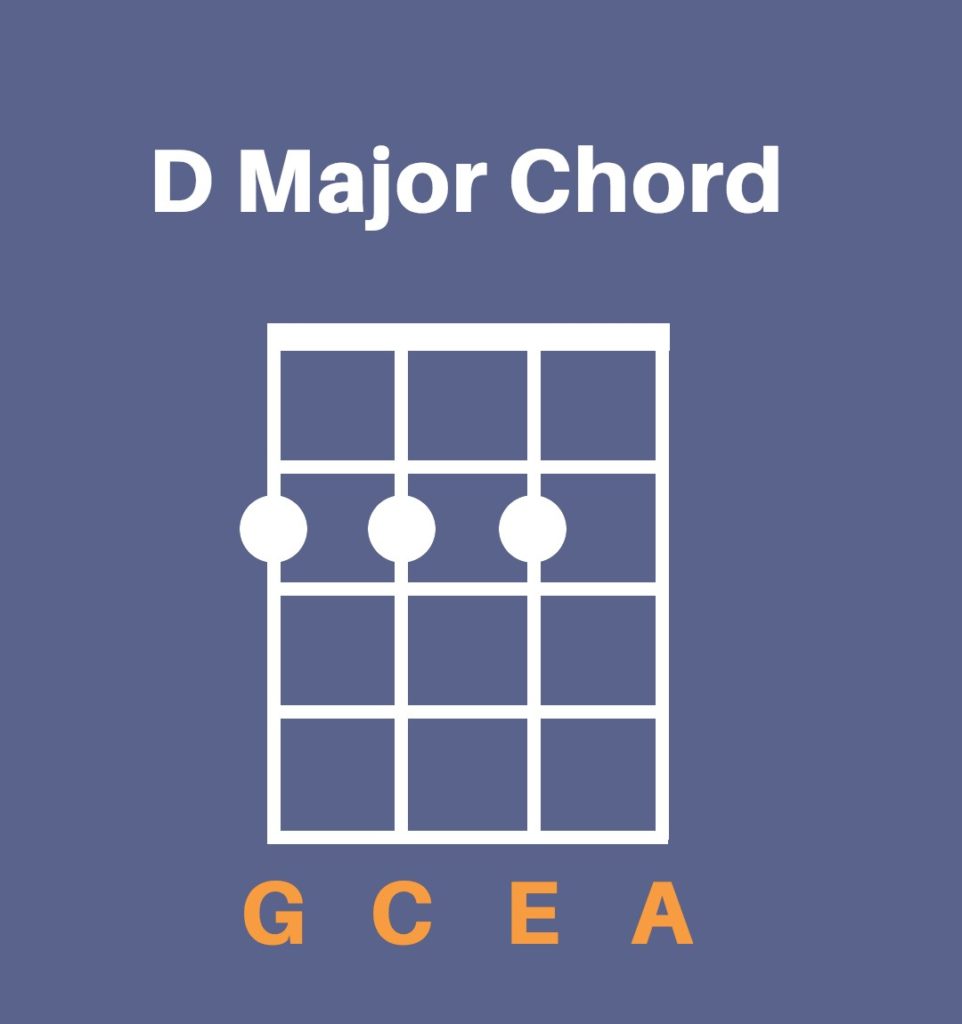
On a ukulele chord diagram, there are four lines. Each line represents a string on the ukulele. The G string will be the string on the left side of the tab, and the A string will be the string on the right side of the tab. You also will see circles on each line that tells you on which fret you need to pluck the string. For example, looking at the above chord, there is a circle on the second fret on the leftmost line. That means that you need to pluck the G string on the second fret.
Tabs
Though chords are the more common way of providing written notation for ukulele music, you may come across tabs, too!
Tabs (short for tablature) are simply a way of telling you which strings to play in what order, as well as which frets to play on each string. Here’s an example:
As you can see, there are four horizontal lines, as opposed to the vertical layout of the chords. In tabs, the bottom line represents the G string, and the top line is the A string. The numbers on each line tell you the fret of that string that should be played.
If you see a series of numbers stacked vertically, the tab is indicating to play all these notes at the same time. In fact, you may be looking at a chord! Sometimes, tabs even indicate the name of the chord over a tab.
There are also some other symbols you may see when reading a uke tab, such as an “X”, which means to not play the string at all, or an “O”, which means to play the string open. You may also see an “h” (hammer-on), a “/” (represents sliding), or a “P” (pull-off). As you learn more about reading uke tabs, you’ll also learn the different symbols and what they mean.
Get Practicing!
If you think you’re ready to learn some beginner ukulele chords, try the C major chord, which is by far the easiest chord! You only need to place your ring finger on the A string on the third fret, and that’s it:
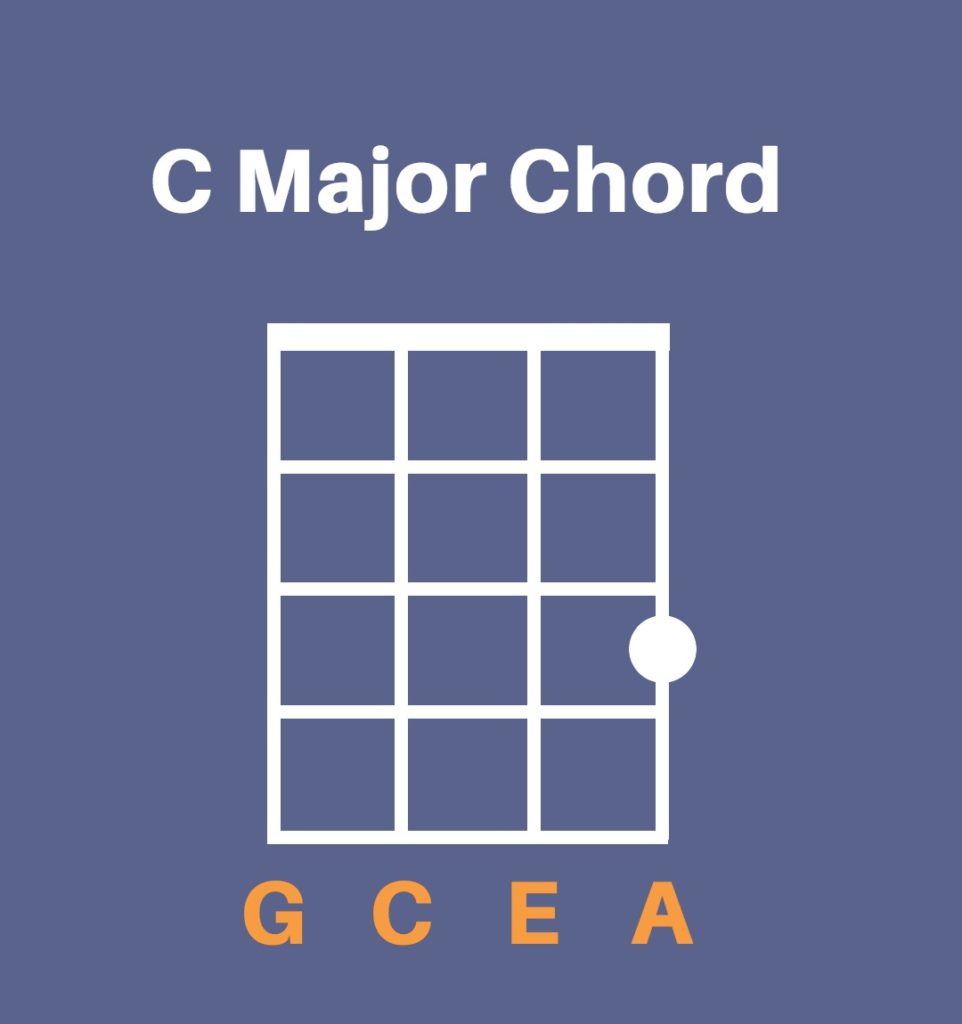
Once you’ve mastered C major, try A major. For A major, you will need one finger on the G string on the second fret, and another finger on the C string on the first fret:
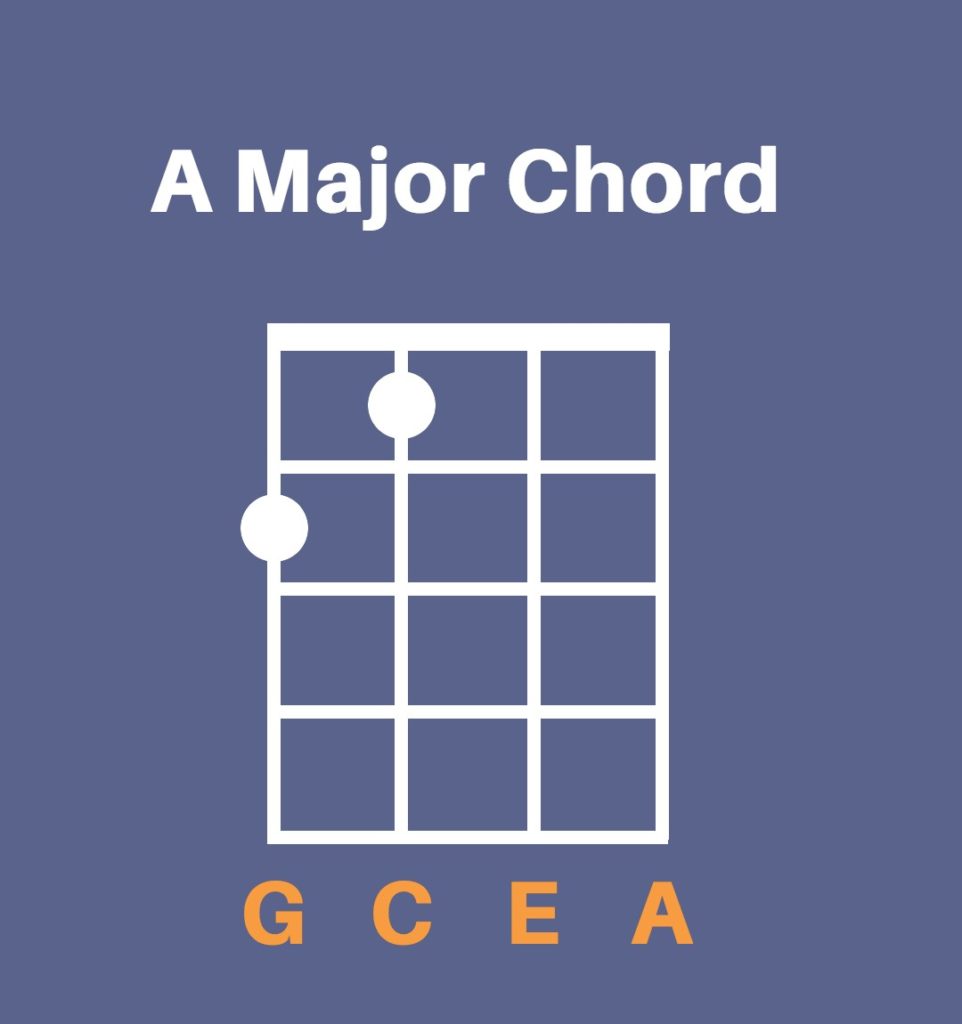
Coustii has a ukulele chords for beginners’ guide to get you started. If you’ve just learned how to read ukulele tabs, you can learn new chords by reading uke tabs by yourself!
Putting it All Together
Once you have conquered a few basic chords, it’s time to try some easy songs.
Here are a few songs that everyone will love, and won’t be too difficult for the beginner:
- Stay With Me – Sam Smith
- Sweet Home Alabama – Lynyrd Skynyrd (a classic song for stringed instruments!)
- Margaritaville – Jimmy Buffet (for those who prefer an older sound)
- Whistle – Flo Rida
There are many demos of these songs and others on YouTube so that you can learn quickly by watching others play the song. If you prefer to learn on your own, you can also research ukulele chords or tabs and give it a go on your own!
Another way that you can learn ukulele is by using ear training. Sometimes, people naturally learn to play music by listening and playing the notes that they hear. If it is difficult for you to learn by just using your ears and trying to replicate the notes you hear, you can also use Musical U’s training exercises and resources to be a more natural musician and play by ear.
Stay Motivated: Join A Musical Community!
Whether you are in the beginning stages of learning the ukulele or are just starting to play again, one of the biggest hurdles to overcome while learning any instrument is staying motivated!
It can be very difficult to stay motivated if you feel that you are not making progress and improving. The best way to stay inspired is to keep practicing! Make it easy for yourself by creating a regular routine for practicing. If learning the ukulele is important to you, find time in your hectic schedule for at least 15-20 minutes of practice a day, or create a routine that works for you. See what you can do to keep yourself motivated and learning!
”There is no better way to keep yourself playing than surrounding yourself with other ukulele players. If one uke is good, two or more is better!”
Also, imagine being able to pick up your uke and playing any song you want, just by listening to it a few times. This may be a pipe dream for many musicians, but it’s in fact a very tangible goal! Ear training is a great help in helping you understand chords and find your way around the fretboard, and will help you improve faster with your ukulele.
Musical U will give you both of the above: a supportive community of fellow uke players, and online training and instruction to teach you ear training. By joining, you can benefit by learning how to play by ear, jamming with others, and gaining confidence in your uke skills as well as your ability to improvise! You can even connect with other musicians globally and stay focused on learning. As musicians, it easy to get discouraged, and simply learn chords and songs, but online courses with community support will ensure you master the uke in no time!
The post You Bought a Ukulele… Now What? appeared first on Musical U.
In this audio tutorial, you will learn how to use your ea…
https://www.musical-u.com/learn/music-production-mixed-3-ways/
In this audio tutorial, you will learn how to use your ear training skills in music production and mixing for collaborative projects. Hear how to apply simple tricks in editing, rhythm, and overall feel to improve your music. Finally, check out some helpful tips for your next big project. https://www.musical-u.com/learn/music-production-mixed-3-ways/
